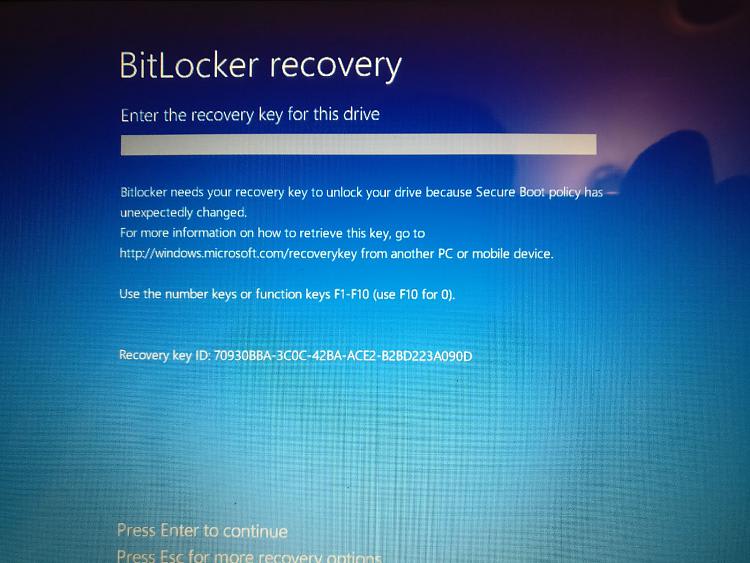Originally published at blog.mphomphego.co.za on February 24, 2019
After almost 4 years of using my Dell Latitude E5540, I was due for an upgrade.
Well I must say, this laptop has served it's purpose and I enjoyed every minute of it apart from the battery life and the failing disk which causes my system to just freeze time to time, as I digress.
Anyways, I decided to place an order for a Dell XPS 15 9570. It is an amazing laptop to say the least from the 16Gb memory to the 512Gb SSD not forgetting the Intel Core i7 CPU. I just had to get my filthy hands on it.
The thing with new laptops is that getting Ubuntu installed alongside Windows is a bit trickier due to the high level of security on EUFI mode instead of BIOS, and Windows Bitlocker/secureboot related issues.
I have seen numerous online/YouTube tutorials on installing different versions of Ubuntu on different XPS's along side Windows 10, however not all work, It is either you Wipe Windows completely and then install Ubuntu or risk corrupting Windows installation - which sucks!!!

Long story short, the last time I used Microsoft Windows was when Windows Vista came out, I have been a Linux heavy user since then and the only reason why I opted to dual boot instead of a complete system-wide Linux installation is the Video editing tools and Gaming on Windows - So I was like...

Enough about the chit-chat let me get down to business.
Preparation
First, you need to download an Ubuntu ISO and burn it to your USB stick.
You can find the list of Ubuntu flavours here, I rather prefer XUbuntu and the instructions for burning the ISO to USB are here using etcher.
In your Windows 10:
Partition storage drive
- Click the
start menu. - Type
disk managementand openDisk Management. - Select the
Windows partition(most likely to be the largest one). - Right click on it and select
"Shrink Volume". - Shrink to desired amount. (I shrank 200GB for Ubuntu)
- See if a partition of
"Unallocated space"is shown.
Enable AHCI mode
In order to install Ubuntu or any Linux distro, you need to set the storage drive to AHCI mode.
- Click the
start menu, search and run Command Prompt as anadmin. - Run:
bcdedit /set {current} safeboot minimal - Reboot.
- Tap
F2when you see the Dell logo, until it loads the BIOS/UEFI setup. - Under
Settings, selectSystem ConfigurationthenSATA Operationand enableAHCImode. - Press "Apply", "Save as Custom User Settings?" and then "Exit".
- Windows will boot into
Safemodeand will require you to login. - Open the Command Prompt as an
adminagain (Windows + R, type incmdand press Ctrl+Shift+Enter) - Run:
bcdedit /deletevalue {current} safeboot - Reboot.
Installing Ubuntu
If you followed all the instruction, we are now ready for the installation of Ubuntu.
- Insert the
Ubuntu USBinto the XPS obviously and Reboot. - Tap
F12when you see the Dell logo. - Select the one with the words "UEFI: Vendor blablabla" in it and hit enter.
- Select "Try Ubuntu without installing" option [DO NOT HIT
ENTERYET!] - Press
e - Find the line with
quiet splashand addnomodesetjust after it in.

- Press
F10to save. - Locate the
Ubuntu installeron the desktop and launch it. - Select
"Enable Insecure Boot mode"during the installation and remember the password for it. - Complete the installation and Reboot
After the reboot, you will be greeted by a blue screen "Perform MOK management", press any keys and,
- Select
Change Secure Boot State - Enter your password and then
Continue Boot.
After that, the computer will reboot and you will be greeted by the Grub screen with booting options.
- Hover over the option
"Ubuntu" - Press
e - After the words
quiet splash, addnouveau.modeset=0.- Detailed instructions can be found here
- Press
F10to save.
Boot into Ubuntu, and open your terminal and add the parameter nouveau.modeset=0 to the Linux kernel command in grub. To make it permanent.
echo 'GRUB_CMDLINE_LINUX="nouveau.modeset=0' | sudo tee -a /etc/default/grub
sudo update-grub2
Post Ubuntu Installation
After a successful Ubuntu installation, you will need to update the packages as well as install some drivers for your machine, however this can be very tedious. So over time I got irritated about installing packages after a fresh install and then I wrote script to automate my installations.
Check it out on GitHub and read the README.md, contributions are always welcome.
The script will install various packages as well as XPS 15 tweaks.
To run the installation enter, command and follow the prompts.
bash -c "$(curl -L https://git.io/runme)"
Conclusion
Dual booting Windows and Linux can be a challenge on it's own, It took me some time to get everything to working and at the end of it all - It was worth it. The Dell XPS 15 is a great laptop to work on, It will take me sometime to adjust from from using the Latitude. I hope this post was helpful.
Further Reading & Reference
- https://medium.com/@peterpang_84917/personal-experience-of-installing-ubuntu-18-04-lts-on-xps-15-9570-3e53b6cfeefe
- https://medium.com/@jthegedus/ubuntu-18-04-lts-on-a-dell-xps-15-db4dcee9a2f9
- https://medium.com/@tomwwright/better-battery-life-on-ubuntu-17-10-4588b7f72def
- https://medium.com/@kemra102/linux-on-the-dell-xps-15-919e6d472aa3


Top comments (1)
Hi! When I try selecting the “try Ubuntu without installing” there is no option to then press e. If you click the button, it just runs the sample mode of Linux. How can I get around this? Thanks
.